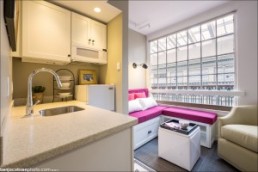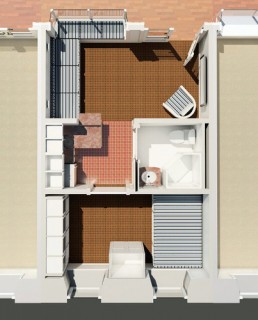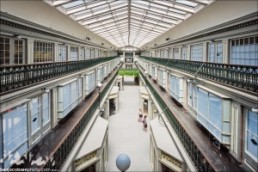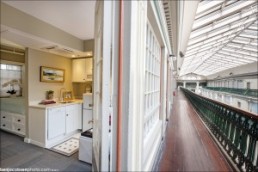AIA Rhode Island, a chapter of the American Institute of Architects honored Northeast Collaborative Architects with a design awards for the Micro Lofts at the Arcade, Providence, R.I. The annual competition celebrates outstanding works of architecture from Rhode Island architects and honors the project teams and clients who work with them.
The Micro Lofts at the Arcade earned the 2013 Merit Award in the Historic Preservation category. Micro lofts are innovative housing models that offer access to urban amenities at affordable prices. The Arcade was built in 1828 in the Greek Revival style and is regarded as the nation’s first enclosed three-story shopping mall. The Arcade was listed on the national register of historic places in 1971 and is notable not only for its striking architecture, which includes ionic columns at both entrances to the building, but also for the memories many Rhode Islanders have of strolling through the building. The Arcade had been shuttered for three years. In that time, the Providence Preservation Society placed it on its list of the city’s ten most endangered properties.
NCA created 48 innovative micro lofts on the Arcade’s second and third floors and 17 micro retail spaces on the main level. The $7 million adaptive reuse project respects the Arcade’s historic design, but the building is modernized with double-hung windows to bring in more light. The furnished one-bedroom units range in size from 225 to 450 square feet and feature full bathrooms, built-in beds, seating, storage, as well as kitchens equipped with refrigerators, sinks, dishwashers, and microwaves. When residents need more space than their cozy individual units offer, they can take advantage of a game room, TV room and porches. The Arcade has other common amenities including on-site laundry, bike storage, locked basement storage units, and a parking garage across the street.
The jury was comprised of architects from Philadelphia, Pa. and their official comment about the Micro Lofts at The Arcade was, “The jury classified the project as a Historic Preservation achievement because it took a building of preeminent significance off of the endangered list. In so doing, the project provides multiple lessons about giving old buildings new life, while addressing contemporary needs for community and sustainable urban living. One of us summed it up: ‘When working in a historic building, this is exactly the type of outcome you want to see.’”




